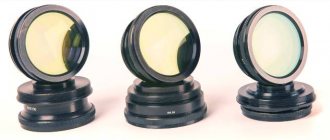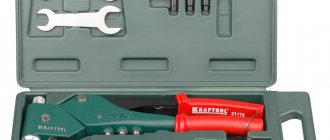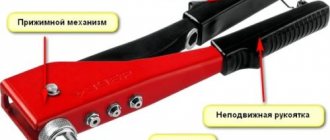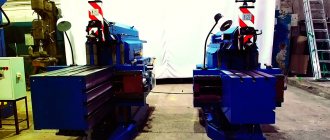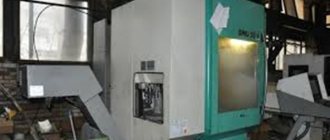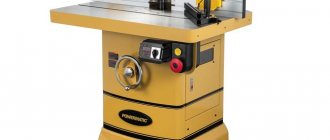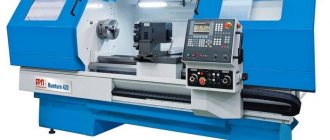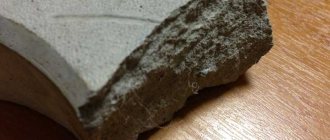TruMAX - an innovative approach to production
If you are looking for enterprises that perform rotary metal drawing in St. Petersburg, contact TruMAX!
- We have extensive experience in the field of metal processing: our designers, designers and operating personnel are masters of their craft.
- Considering the scope of application of our products, we use only high-quality materials in production.
- Aesthetic appearance and long service life are important to us, so all parts are carefully processed according to your technical specifications.
- We respect your time, so we complete your order within the agreed time frame.
- The client's wishes are law for us. We can carry out rotational metal drawing to order according to the provided drawings.
- Our production facilities are equipped with modern high-tech equipment. This allows you to complete any order quickly and efficiently.
- We do not forget about the environment, so our enterprise was built in accordance with European standards and requirements.
You can contact us in several ways:
- by phone numbers listed on our website;
- by visiting our sales office;
- by sending a request to an email address;
- by filling out a special form on the official website.
We will answer all questions, carry out a preliminary calculation of the cost of the service and easily bring your ideas to life.
Why are prices for rotary hoods discussed individually?
Despite the fact that the equipment is focused on mass production, the production of parts by drawing is still a complex process.
If the product is unique and not standard, it is necessary to create a sketch of it, think over the deformation technology, select a tool, and, if necessary, make the same specific mandrel. All this requires time and effort, and a whole group of specialists. Therefore, the cost of the service is usually discussed individually. In the price list (the “Cost” tab) you will see samples of products and average prices for one unit, but determine the final cost of the project individually when discussing with the contractor.
Inexpensive metal drawing services
Do you need a custom rotary hood? This is where you can choose the right offer so that your order is completed efficiently and without wasting time. Our advantages:
- professional personnel;
- prices available for Moscow and regions;
- excellent technical equipment of production;
- compliance with all standards and requirements laid down by guests;
- guaranteed quality result.
Send us an application and we will make a preliminary calculation of the project on the day of your request. We are waiting for your orders!
Spinning lathe
A rotary drawing machine, or as it is also called a lathe-spinning machine, is designed for the manufacture of various thin-walled parts that are bodies of rotation, obtained from sheet or hollow workpieces and the corresponding material. The rotary drawing machine allows us to produce a wide range of competitive products, ranging from decorative products to products for the space industry.
Rotary drawing differs from stamping and has its own characteristics. The workpieces for processing on lathes are any viscous material, it can be: aluminum, copper, brass. You can also use annealed low-carbon steels, kovar, stainless steel, etc.
The design of a spinning lathe is very similar to an ordinary lathe, but unlike the latter, it does not have a feed box and a caliper. Instead of a tool holder, the lathe-spinning machine is equipped with a support for special “press” tools, if we are talking about ordinary mechanical equipment.
In addition to manual lathes, industry in advanced countries produces universal machines equipped with numerical control systems, in which the processing process is fully automated. As a rule, rolling on such machines is carried out with rollers.
Rotary drawing is carried out on lathes of various capacities, which make it possible to produce a wide range of products, from musical cymbals and bells for wind instruments, to the bottoms of tanks and containers used for storing liquids installed in railway and road transport.
With the help of high-performance lathes, various products are produced, such as: head fairings of the front parts of rockets, airplanes and other fast-moving objects that provide the least aerodynamic drag, satellite antennas that provide high-quality signal reception and transmission. These machines produce light reflectors, which, after running in, take on a spherical or conical shape and are used to illuminate factory areas, shops and other premises. Reflectors can also be decorative, which in addition to lighting have a pleasant appearance and serve as a worthy addition to the interior.
Rotary drawing technology allows you to reduce the cost of serial and small-scale production of some machine parts, for example, pulleys, which are usually turned from a workpiece (round blank), they can also be rolled on a lathe, which is much faster in production speed and more economical in metal consumption . The parts can also be various casings, flanges, guides, thin-walled vessels of a special shape, overhead cones, etc.
But the main direction of lathes and presses is, of course, the production of consumer goods: saucepans, which are constantly in demand, mugs that are daily necessary in everyday life, decorative trays and stands, plates, bowls for eating, thermoses that keep the contents warm, and much more.
Classification of CNC machine tools
Pressure-rotary drawing has many of the properties and functions of turning analogues. In contrast, pressure-rotary devices have a higher operating speed. There are three types of devices of this type:
- manual tabletop;
- manual floor;
- with a rotary hood.
Rotary drawing is accompanied by additional actions such as rolling, expanding and welding. The rolling machine is capable of both producing a solid part using the rolling method, and completing the drawing and production of spare parts made using other equipment. The most popular products of this kind, for example, are tubular spare parts with various combinations of cross-sections.
The machines can be used not only for processing metal parts, but also copper ones that have a conical shape. The advantage of CNC devices is that the process is less labor-intensive than using presses. Modern technologies make it possible to monitor the operation of devices remotely. Round metal plates are used as the main raw material for working on a rotary pressing machine.
But the devices can also cope with workpieces that have a more complex geometric shape. Additional methods of working with the product are circular and hydrojet cutting. Examples of plasma and laser cutting in this case are less effective, since they can increase the temperature, which will change the plastic qualities of the spare part.
Rotary drawing technologies
Metal forming technologies, which are dealt with by the Technological Center Research and Production Enterprise, are becoming increasingly important in the manufacture of parts due to the economical use of metal and the possibility of obtaining optimal mechanical properties of parts. Cost-effective and flexible rotary extrusion methods are promising.
FEATURES OF THE ROTARY HOOD
Rotary drawing is a process of local cyclic deformation of a rotating flat or hollow workpiece with a deforming tool in the form of one or several rollers and is a real alternative to conventional sheet stamping in the manufacture of axisymmetric parts. Tools in the pressing method are most often not tied to the geometry of the parts. In this regard, this method is sufficiently economical and extremely flexible, which allows the pressing method to be promising not only in the field of mass production, but also in the production of a limited number of parts and the production of single prototypes.
The rotary drawing process is more amenable to automation than most other form-building operations of sheet stamping, because equipment is used that, in its kinematic design and control system, is similar to universal metal-cutting machines of the turning-milling group, and it is possible to combine several operations on one equipment up to production finished part. In addition, this equipment is quite versatile and allows the production of parts of various complex shapes and sizes.
ADVANTAGES OF A ROTARY HOOD
- Relatively simple and inexpensive technological equipment and tools.
- Achieving significantly higher plastic deformations (more than 90%) without heat treatment compared to other cold sheet metal forming operations.
- Quite low energy consumption and power of the equipment used.
- Possibility of forming parts from hard-to-deform alloys.
- Implementation of local heating of the source of plastic deformation.
- Implementation of combining on one machine from one installation the main and finishing operations (smoothing the surface, trimming the flange, cutting off the allowance or bottom, bending or curling the edges, creasing, etc.).
- Combination of several basic operations (drawing, rolling, crimping, distributing, flanging) in one automated cycle.
- Obtaining a part with a given variable wall section; processing of parts from sheet, stamped, forged, cast or welded workpieces, thereby obtaining an improved metal structure - the hardness and tensile strength of the part material increases up to 2 times compared to the workpiece material.
- Possibility of adjusting the accuracy of the resulting workpiece (part) by appropriate selection of processing modes.
- Ensuring high surface cleanliness of the part corresponding to finishing operations - surface roughness up to Ra 0.32.
ECONOMIC ADVANTAGES OF ROTARY HOODS
- Small time and material costs for production preparation.
- High economic efficiency when producing parts in small batches.
- Reducing the parts processing cycle and reducing costs by reducing the number of transitions and concentrating operations on one workplace.
- Increasing the metal utilization rate.
- Quick reconfiguration for the production of new parts.
- High automation of rotary drawing on automated equipment, allowing efficient use of the process in mass production.
Traditional rotary drawing operations, previously used primarily for the manufacture of critical high-precision parts of space and military equipment, thanks to the creation of their fairly reliable mathematical models with appropriate methodological and software, have the opportunity to be effectively used in flexible modern production. The use of rotary drawing technologies in industry makes it possible to produce many axisymmetric parts of various machines and mechanisms with high performance properties, with minimal production costs, contributing to the development of automated production.
What is a rotary hood
A method for processing sheet-type metal products, in which a three-dimensional part is transformed into a hollow one with an axisymmetric appearance, is called rotary drawing. It involves significant deformation and thinning of the walls of the spare parts. This method of processing sheet metal by drawing has ancient roots. In modern manipulation of steel blanks, it is carried out by a pressing and rolling machine.
Using the rotary drawing method, these devices are capable of producing household items with thin walls and complex shapes. A set of such devices is presented:
- teapots;
- scoops;
- sponges;
- vessels;
- coffee pots.
With their help, the production of components is carried out, thanks to which the following are produced:
- fans;
- beer brewing installations;
- betonieres.
Mechanical parameters and basic circuits
Metal cutting: technologies used
The worker must take into account many technological parameters of the operation, since an accidental deviation from the norm may significantly change the technical parameters of the processing, which will lead to a violation of the accuracy of the procedure.
Preload
One of the main parameters is tension. From a technical point of view, interference is the difference between the dimensions of the original hole and the mandrel tool (usually this indicator is measured in millimeters, and the diameter of the pipe and the diameter of the mandrel are used as the measurement object). If the interference is too large (that is, the mandrel and the hole are very different in size), then it will be problematic to make a smooth, hard surface. Also, when processing, you need to take into account some features of the material from which the pipe is made - ductility, hardness, and so on.
Force
In addition to the tension, the force of the burnishing is of great importance, which means this parameter means the intensity of the hole machining
Please note that there are two types of mandrel force - radial and axial. By radial force we mean the degree of influence of the mandrel in the perpendicular direction. This indicator reflects the degree of expansion of the pipe diameter during processing
This indicator reflects the degree of expansion of the pipe diameter during processing.
Axial force refers to the impact of a tool along its axis. The higher this indicator is, the easier it will be for the mandrel to cut off various roughnesses
Also note that relative deformation must be taken into account when processing. This indicator reflects the degree of increase in the outer part of the part
Scheme selection
Also, before processing, it is necessary to choose a mandrel method - the tensile method, the compression method or a combined method. Each technology has its pros and cons.
The most popular is a combined tension-compression method. What is the reason for its popularity? It does not create the excessive axial loads associated with conventional tension or compression methods. Thanks to this, processing is carried out smoothly, which avoids mechanical damage.
However, it must be remembered that the combined method scheme requires special equipment, which is quite expensive. To burnish a pipe at home, you should choose an alternative method.
Features of the package
Models of CNC machines have a high productivity rate. Thanks to numerical control, they have an automatic production mode. By using such a machine, you can provide yourself with a number of advantages. One of them is the presence of two tool rollers, which simultaneously exert increased pressure.
The configuration of the above models consists of examples:
- circle-centering device;
- optional manipulator;
- double type tool head;
- 4+4 positioning mechanism;
- hydroelectric power stations;
- additional roller with a compensator.
The thickness of aluminum blanks for processing should be from 0.6 to 4 millimeters. For steel blanks - from 0.6 to 2.5 millimeters. For workpieces made of corrosion-resistant steel - from 0.6 to 1.5 millimeters. The specified characteristics are relevant only for original models.
Characteristics of sheet stamping
Cold sheet stamping is today one of the most widespread technologies for processing metals, plastics and some other materials. The range of application of the technology is from large structures in shipbuilding to thin-walled parts of household appliances
The technology is characterized by the following undeniable advantages:
- Exceptional opportunities for mechanization and automation of production processes.
- Reducing the cost of manufacturing mass products.
- High utilization rate of sheet metal.
- The ability to accurately manufacture thin-walled but durable products of almost any shape.
- Minimal need for subsequent machining.
However, in addition to obvious advantages, cold sheet metal stamping also has disadvantages. This is, first of all:
- High complexity of technological process design.
- High cost of preparation for production of molds.
- Highly qualified press equipment debuggers.
Sheet metal stamping
It should be noted that with large series of manufactured products, these disadvantages are leveled out due to the economies of scale known from economics, and the cost of manufactured products turns out to be lower than with alternative methods of metal processing.
Processes for the production of parts of the type under study
In the production of complex-profile axisymmetric products from sheet material, it is possible to use the following form-building operations: stamping with a rigid tool on a hydraulic press, bending, in combination with welding and calibration, stamping on a press with an elastic tool, hydroforming and rotary drawing (Figure 2). Let us consider the feasibility of using the above operations in the production of complex-profile axisymmetric parts from heat-resistant and corrosion-resistant alloys.
Despite the relatively low labor intensity of stamping on a hydraulic press, due to the need to carry out this operation in a tool on a press, profiling with a tool on a press involves several transitions, the cost of equipment makes a significant contribution to Bending in combination with welding and calibration ensures a sufficient variety of parts produced, however, the presence of welds significantly reduces the mechanical characteristics of the resulting products. Stamping with an elastic tool can eliminate all the disadvantages of the above technologies, however, limitations on the strength characteristics of the deformed metal negate all the advantages of the process when stamping heat-resistant and corrosion-resistant alloys. Liquid stamping (hydroforming), despite the ability to produce complex-profile products in one step, has two main disadvantages - significant thinning of the material in the dome-shaped part of the part or at the bottom and the possibility of breaking the axial symmetry of the product due to uneven friction along the clamp and the lack of friction between the workpiece and liquid punch.
Rotary drawing on specialized equipment eliminates or significantly reduces all the disadvantages of the above methods, allowing the production of high-precision parts from heat-resistant and corrosion-resistant alloys of various sizes and shapes with high mechanical characteristics.
Rotary drawing is one of the oldest methods of processing thin sheet material. The first rotary drawing machines were widely used in ancient Egypt. They were used to produce parts from soft metals and alloys, such as jugs, glasses, etc.
Over time, the process began to be replaced by more high-performance technologies - cold stamping, drawing, welding from sheets, etc.
They remembered about rotary drawing again only in the 30s of the last century, when the first machines with an electric drive for rotating the part and manually moving the roller began to appear. Later they were replaced by machines with hydrocopiers, and then, in the 70s, by CNC machines and the Playback (PNC) system.
Currently, the main manufacturers of rotary drawing machines in the world are Leifeld and Denn. Their equipment, which has a rigid system for fastening and moving rollers, allows them to produce parts with an accuracy of La = 0.63-0.32 and do not require additional finishing.
Let us consider various schemes of the rotational drawing process, highlighting three main schemes of shaping processes,
The first scheme includes the process of “laying” a workpiece on a mandrel in one pass, the so-called projection drawing - shear forming. During the process, the change in the wall thickness of the workpiece occurs according to the sine law, i.e. The wall thickness of the workpiece is proportional to the sine of the angle of inclination of the forming shell to the axis of the part. S=S0xsma (1.1)
A schematic diagram of the “projection” molding process for the case of manufacturing conical parts is shown in Figure 3 – Scheme of “projection” molding from a flat workpiece.
Thus, when choosing the dimensions of the initial workpiece, it is necessary to take into account the thinning of its walls during molding.
When molding by “projection” of parts with a curved generatrix, it is necessary to design the technology taking into account changes in the angle of inclination of the tangent to the workpiece element, which necessitates the use of workpieces of various shapes.
Figure 4 shows options for selecting workpieces that ensure the production of shells with uniform wall thickness. This is the pre-forming of the workpiece (a) and the use of workpieces with variable thickness (b).
Metal drawing and its types
According to the methods used in the manufacture of parts by drawing, this operation can be direct or reverse.
With the direct method, the movement of the workpiece is carried out in the direction of movement of the forming roller. In reverse, the workpiece and roller move in the opposite direction. Based on the complexity of the process, there are stepped and projective hoods. Stepwise is suitable for processing workpieces of regular circular shape. In this case, special requirements are placed on the mandrel - its shape must be identical to the configuration of the product. The workpiece changes under the influence of a roller, which makes repeated movements from the edge of the blank and back. To achieve the result, the tool performs several passes, hence the “multi-stage” in the name of the technology.
Unlike the previous technique, when projecting, the roller makes only one pass, deforming the blank material in the axial direction. This is a more profitable technology for custom-made rotary hood, since, firstly, it saves time, and secondly, it helps to obtain a very high-quality surface.
When rolling over the workpiece, an operation is performed that can be called “compression”: the walls of the blank thicken, and during this process the outer diameter of the primary part changes. Finally, with the combined method, several technologies can be used simultaneously, which makes it possible to obtain a complex result.
Rotary metal drawing: rotary drawing technology
Profi Pressing and rolling machines, Club "PROFI" →
A tool for working on a pressing and rolling machine or for rotary drawing of non-ferrous metals on any lathe looks like this:
The duck nose or sheep nose are most actively used in work, although this largely depends on what kind of product is being rolled out. And the simplest tool to make to begin your exploits in winepressing looks like this:
It can be made from tool steel round timber 16..30mm, depending on what machine you will work on and what dimensions your product will be.
Using a sharpening machine or grinder, give the tip the required shape, grind, harden and polish to a mirror surface.
All flaws and shortcomings after grinding and polishing the tool will be transferred and multiplied on the workpiece in work! An unhardened tool will quickly acquire surface damage - scratches and spoil the surface of the workpiece.
When working with such a tool, for obvious reasons, it is necessary to use lubricants. You can use stamp lubricant, wax, soap (for aluminum), etc. The main task is to ensure sliding, the longest possible stay of the lubricant on the workpiece during work and the ease of cleaning it after finishing work.
The next step in mastering the “pressure” with your own hands can be a straight hand tool with roller attachments:
It is necessary for rolling sharp corners (using triangular rollers), rolling edges and flanging (using rollers with a groove on the surface), in addition, it can be used to work not only with non-ferrous metals, but also with harder black metals (according to ability to draw cold-rolled steel up to 2 mm thick, strength groups K260V, K270V, K310V, K330V, K350V - deep - G, DX53D - Molded steel, corrosion-resistant, quality for deep drawing, DX54D - Molded steel, corrosion-resistant, quality for extra deep drawing hoods, DX56D - Molded steel, corrosion-resistant - Quality for extremely deep drawing, etc.), stainless steel. (304), etc... (the leftmost tool in the photo is equipped with a carbide tip and is used for trimming edges).
A tool for working with ferrous metal must be more powerful. Pressing steel with a thickness of 1 mm or more without a lever is quite a labor-intensive task, not to mention working with metal 2 or 3 mm thick, and even more so with stainless steel. Also, the pressure tool for working with h/m must be roller, because
the hardness of the workpiece becomes close to the hardness of the tool, and the forces applied during rolling increase significantly and as a result, when you try to roll out with a simple tool, it heats up, becomes damaged and damages the workpiece.
In addition to the actual lever used to increase the operator’s pressure on the part, such a tool allows you to not have to worry about holding the rolling roller in a vertical position, reduces runout, and the increased weight of the tool rests on the support stand.
- As an example, I will give a drawing and photographs of a finished lever tool for pressing and rolling. You can modify and optimize it to suit your needs and at your own discretion:
- Support stand:
- Pressing lever with roller + “fingers”
- Swing arm:
- Photo of the finished tool:
To make work easier, this tool is also good for working with non-ferrous metals. The disadvantages of a tool with a lever would be that it is less sensitive, so when working with silver jewelry, it is better to use a straight tool.
- Various models of pressing and rolling machines can be viewed here.
- Also see the article about composite mandrels for the production of “closed” forms using a rotary hood
Scope of application of rotary metal drawing
As we have already mentioned, drawing work is not necessarily the finishing point, after which the workpiece immediately turns into a part.
It may be followed by other processes of rolling, grooved, trimming and many others. As a fairly “omnivorous” and metal-friendly technology, it allows processing not only rolled products, but also cast and forged workpieces, and even welded ones - despite the fact that the presence of a seam complicates the work. The main product of custom-made rotary hoods are containers and reservoirs, which can have bottoms of various shapes - from elliptical, spherical and conical to the simplest - flat. Moreover, these products can be produced from almost any metal - from black steel and stainless steel to aluminum, copper and alloys based on it.
In addition, the following is produced using the drawing method:
- plumbing fixtures (for example, sink bowls),
- lamp shades,
- candlestick bases,
- reflectors,
- household dishes and many other products.
Machines for rotary drawing of metal
In addition to round cutters, which help to divide rolled sheets into ideally shaped workpieces, turning-spinning machines are becoming the leading equipment for drawing work.
The simplest and most inexpensive models are of the manual type. And in the literal sense of the word: the deforming force is applied by the worker’s hands. Alas, this is precisely why the human factor often interferes with the process: even the most experienced machine operator can sooner or later make a mistake. In contrast to this technology, custom-made rotary metal drawing in Moscow, which is performed using CNC equipment, looks much more attractive. All processes, including force, order and pressure point, are controlled by software. In these devices, the clamping tool can move along an intricate trajectory that cannot be reproduced manually. And the shape accuracy of the finished part will be much higher.
